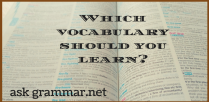Today is high time for you to revise, and for some of you to learn different moods in English. Once again remember: this is simple!
There are only three moods in English: Indicative, Imperative, and Subjunctive.
Some of my students want to make such mistake, but please, note, we can’t say that Conditional is a mood.
Let’s discover the Indicative, and Imperative moods today.
Indicative mood shows real actions:
- You work from 10 am to 18 pm.
- The bus arrives at 9.45 am.
- We dislike sweets.
- It is usual for him not to sleep during the whole day.
- I know, you are right.
- Sorry, could you wait a minute?
- Where are the children?
- Do you want some more juice?
- She will be here in half an hour.
- May I come in?
Imperative mood expresses orders, demands, offers, and prohibitions.
We form the Imperative mood in three ways:
1) We use the infinitive without “to”:
- Stop this!
- Dance! Dance! Dance!
- Don’t do that.
- Help yourself.
- Make yourself at home.
- Hurry! Hurry up!
- Be my guest.
- Take a seat.
- Please, sit down.
- Come in.
- Come here, kitten. Don’t be afraid.
2) We use “let” + infinitive without “to”:
- Let’s study the further examples!
- Let’s go to the cinema.
- Let it be.
- Don’t let me go.
- Don’t let him in!
- Let’s not argue about the past.
- Let her go. She will be back.
- Let’s ask him. He knows everything, I am sure.
- Let me say.
- Let’s go by bus. I dislike trains.
3) We use the Imperative phrase + will/won’t you, would you, can/can’t you, could you, etc.
- Post this letter for me, could you?
- Don’t tell anyone about it, won’t you?
- Don’t stay here, can’t you?
- Go there, will you?
- Don’t ask anyone about me, won’t you?
- Tell the chief that I feel bad, would you?
You have already heard these phrases during our classes, haven’t you?
Now we just discovered how to use these moods correctly.






